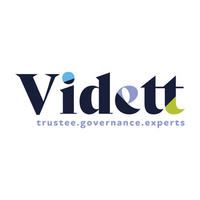Scheme governance: how technology is streamlining decision making

Live funding level modellers are a really useful technology solution that aids decision making for defined benefit (DB) scheme trustees. When combined with a de-risking plan, decisions can be made on changing investment allocations when pre-determined funding triggers are hit. Things would be even more streamlined if only we had straight through processing (STP) for DB schemes – it would be so nice to stop all the running around to sign papers.
E-meeting pack and document storage systems have made the biggest change operationally. Many pension advisers offer their own solutions and there are independent suppliers too. We’re very supportive of these solutions, but you’d be surprised by how many trustees are reluctant to make the electronic shift. Only last week one of our trustee boards asked where all the scheme documents were. With an e-system, they’d have access to all their key scheme documents in just a few clicks. Without it, they were dependent on someone else finding it and sending it to them.
Technology enables pension trustees to annotate meeting papers and share their thoughts and queries ahead of a meeting. This means meetings run more efficiently – trustees know the information they need to take a decision will be available on the day and that means no decision-making delays.
Data security has always been important and never more so since the General Data Protection Regulation (GDPR) entered our lives. Technology means scheme data can be held securely but easily accessed by those with appropriate security privileges. When trustees need to exercise discretion on, for example, a death benefit case, all the information they need is held and the decision is made, tracked and evidenced online. Gone are the days of massive paper packs mailed through the post.
However, there can be a downside. As with all things tech, hardware can be a real pain. Trustees may have to use their own devices, which can mean you’re dealing with a mix of operating systems, browsers etc. Things go out of date quickly and older versions stop being supported. If you’re not controlling the kit being used, you can’t be sure all the trustees will actually be able to use the tech you’re giving them.
Case study: scheme governance technology in action
Our client’s sponsor underwent a significant amount of corporate activity, requiring extensive negotiation with its scheme trustees. During one takeover, negotiations had to happen within very tight timescales and each stage involved several trustee, sub-committee and adviser meetings. With documents often arriving late in the day for discussion at 9am the following morning, their usual paper-based approach simply wouldn’t work.
A new way of working was needed if the trustees were to meet the challenging deadlines and ensure confidentiality was maintained so listing rules about disclosure of information were not breached.
Using an electronic meeting pack system meant:
- meeting documents were loaded and could be viewed immediately, with attendees notified electronically
- all historic documents, papers and deeds were available and fully searchable for easy referencing during any meeting
- once synchronised, copies of all documents could be stored on a tablet without needing permanent internet access
- each user’s security settings enabled access to specific documents but settings could be changed immediately if needed.
To keep the negotiations and legal process moving, rapid turnaround was needed for meeting minutes. These were loaded onto the system quickly for review by the chair and then made available to all attendees, typically within 24 hours.
The outcome
Scheme management has become more efficient. Using the e-meeting system allowed for information to be disseminated securely to a widely scattered group of trustees and advisers.
The trustees had to learn to use the technology very quickly but now love the interface and find it easy to use. As well managing sale/acquisition projects efficiently, ongoing scheme management has also improved. For example, when scheme accounts needed to be signed, the final document was circulated through the system the day before, reducing reading time at the next day’s trustee meeting.
The financial security of the scheme has also improved. Achieving enhanced security was trustees’ primary focus. The significant cash contribution and contingent asset payments negotiated combined with investment out-performance and other factors led to a significant improvement in the scheme’s funding position.
The author is Suzi Lowther, director of marketing and communications at Punter Southall Governance Services.
This article is provided by Punter Southall Governance Services.
Supplied by REBA Associate Member, Vidett
Leading the way in professional trusteeship & governance







